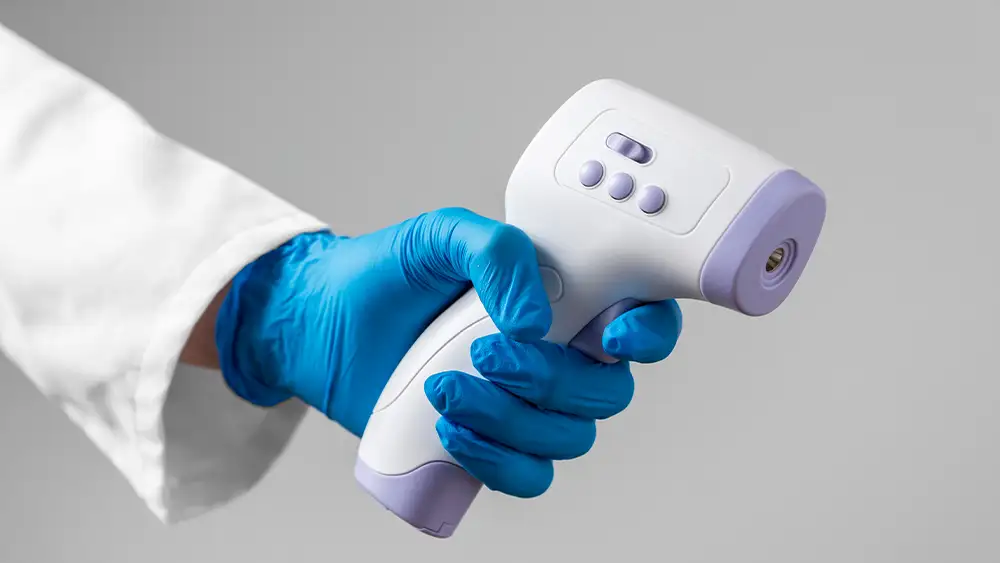7 Tech-Based Pest Control Strategies Every Modern Home Needs

Pest control has evolved beyond traps and chemical sprays. In modern homes, technology plays a growing role in how residents detect, manage, and prevent infestations. Devices and systems now monitor pest activity in real-time, automate responses, and integrate with broader smart home platforms. These innovations improve accuracy, reduce reliance on manual inspections, and support faster decision-making.
The rise of home tech pest control reflects a broader shift toward data-driven, connected maintenance strategies. From motion sensors to automated repellents, these tools give homeowners more control over their environment and help address pest risks before they escalate. This post outlines practical, technology-based methods that can be implemented today to enhance pest prevention in modern residential settings.
Seven Smart Solutions for a Pest-Free Home in 2025
1. Use Smart Traps with Real-Time Alerts
Smart traps use embedded sensors to detect rodent or insect activity and send immediate notifications to a connected device, such as a smartphone or tablet. These systems rely on Wi-Fi or cellular networks to transmit alerts when a trap is triggered, allowing homeowners to respond without physically checking each unit.
This form of automated pest control reduces labor and improves response times, especially in areas like basements, attics, or garages where activity can go unnoticed. Some systems also log trap data for later analysis, helping users track patterns and identify high-risk zones within the home. Over time, this data can also reveal trends in pests per region, offering broader insights into geographic differences in pest activity and helping to tailor prevention strategies accordingly.
2. Install Motion and Thermal Sensors to Track Pest Movement

Motion and thermal sensors designed for residential use can detect irregular activity patterns commonly associated with pests. These sensors identify movement or temperature fluctuations in areas like attics, crawl spaces, basements, or kitchens—locations where pests often go undetected during routine checks.
When integrated into a smart home hub, these devices can trigger alerts or automated actions, such as turning on lights or activating cameras. This level of visibility improves early detection and reduces the chance of a full infestation developing unnoticed.
As part of a broader home tech pest control system, motion and thermal sensors provide continuous, passive monitoring that supports fast, informed decisions about treatment or professional intervention.
3. Program Ultrasonic Devices with Smart Plugs
Ultrasonic repellents emit high-frequency sound waves intended to deter pests such as rodents and insects. While their effectiveness can vary depending on placement and structure, they are most useful when operated consistently during peak activity periods, such as nighttime or seasonal transitions.
Connecting these devices to smart plugs allows homeowners to create automated schedules that align with specific risk windows. This improves consistency while reducing unnecessary energy use during inactive hours. Settings can be adjusted remotely through a mobile app or smart home assistant.
Although ultrasonic devices can support routine prevention, they may not be sufficient in more severe cases. For complex or recurring infestations, it’s best to consult professionals who provide residential and commercial pest control tailored to both the property and pest type.
4. Automate Exterior Defense with Scheduled Dispensers

Timed-release pest control dispensers can be installed along exterior walls, garage entry points, or other perimeter zones to apply barrier treatments at set intervals. These systems dispense controlled amounts of repellent or insecticide, reducing the risk of insects migrating indoors—particularly in areas near vegetation, mulch beds, or water runoff.
Used correctly, automated dispensers minimize manual spraying and create consistent exterior coverage. This approach is considered an advanced pest control method for maintaining outdoor defense without repeated manual application.
In residential settings, these systems complement standard exterminator tools by targeting entry points before pests breach the structure. They are especially useful in climates with seasonal spikes in insect activity.
5. Sync Pest Sensors to Your Smart Home Dashboard
Wireless pest sensors can be connected to your home automation system, allowing activity data to appear alongside other environmental metrics. When these sensors detect movement or heat signatures associated with pests, the system can trigger automated responses—such as turning on lights, activating fans, or sending notifications to your phone.
This setup improves response time and centralizes control, especially in spaces like basements, attics, or garages. It also adds value by integrating pest monitoring into routine upkeep tasks. As part of a larger system, it supports broader home maintenance benefits by helping identify potential structural or ventilation issues that may contribute to infestations.
6. Prepare Your System for High-Risk Infestation Events

Certain pests become more active during specific seasons—ants in the spring, rodents in the fall—making it important to adjust your system in advance. Configure smart traps and sensors to send more frequent alerts during high-risk periods. Ensure devices have battery backups to maintain function during outages and enable data logging to track patterns over time.
These preparations improve system reliability and allow for quicker response when sudden activity is detected. In cases where pest pressure escalates beyond what automated tools can manage, it’s important to be ready for an emergency pest control situation, especially in hard-to-reach areas or when structural access is limited.
7. Use Analytics to Predict Seasonal Pest Risks
Some smart pest control systems include AI-powered dashboards that analyze historical activity data across sensors and traps. These platforms identify recurring patterns, such as increased rodent movement in colder months or ant activity during spring, and recommend targeted pre-treatment for high-risk zones to prevent pests during spring and other critical times of year.
This approach shifts pest management from reactive treatment to proactive prevention. By acting before infestation levels rise, homeowners reduce the likelihood of damage and limit the need for emergency interventions.
As part of an advanced tech pest control strategy, predictive analytics improves long-term planning and makes resource allocation more efficient across seasons.
Make Smart Tools Part of Routine Maintenance
Technology alone won’t eliminate pest problems, but it plays a valuable role in keeping small issues from becoming larger ones. Automated devices, sensors, and connected systems help identify patterns, reduce oversight gaps, and support faster response when needed.
Use these tools as part of your standard home maintenance process—not as a substitute for it. This approach balances convenience with control and ensures pest management stays consistent throughout the year.

news via inbox
Sign up and never miss out on the latest news and updates at HighStuff




